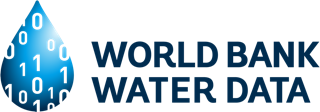In collaboration with the Gambia National Nutrition Agency and the Ministry of Health and Social Welfare, a research team from the World Bank, University of Southern California and Harvard University has developed an evaluation and roll-out design which allows rigorous assessment of the impact of the results-based financing interventions on health related outcomes. The key objective of the impact evaluation is to assess the effectiveness and cost-effectiveness of the package of supply and demand side interventions developed for, and implemented at health facilities and communities as part of the Gambia Maternal and Child Nutrition and Health Results Project. This project is implemented in three regions with some of the poorest performing indicators Upper River, Central River and North Bank West Regions. Over the five-year period of implementation, the project is expected to reach approximately 183,000 children under five and 180,000 women aged 15-49 years, yielding a total of 363,000 direct beneficiaries of the project. The interventions will provide support through RBF arrangements with women, Village Development Committees (VDC) and Village Support Groups (VSG), and primary health facilities. The primary research questions are grouped according to three broad categories: effect on nutrition and health outcomes, effect on service utilization and adoption of behaviors, and effect on intermediate outcomes along pathways of impact. The evaluation uses a mixed-methods explanatory design with an embedded process evaluation based on a conceptual framework that details out the pathways of impact for both interventions. The overall approach for the impact evaluation is a randomized phased-in 2 x 2 design. The plan for the supply-side is that facilities in the three target regions are enrolled in the project in two phases, each lasting 18 months which should provide a sufficiently long time window to allow behavioral changes. In addition to the supply-side interventions, some communities in the target regions will be enrolled in a community-based demand-side component, for which each phase will last 12 months. To measure the community-level impact of the project, three main surveys are to be conducted. A baseline survey was administered at the beginning of the project in October 2014 February 2015. A midline survey is planned to be conducted approximately 18 months after the project launch, and an endline survey after approximately 36 months of the project start. The quantitative and qualitative data from the baseline survey is documented here. This assessment prepared a baseline against which the impact of the project can subsequently be measured. The quantitative baseline data was collected through household, health facility and village questionnaires. Qualitative baseline data was collected using focus group discussions and in-depth interviews.


